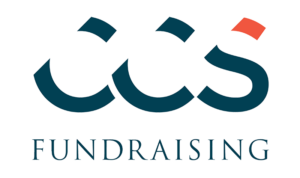Donor acquisition and Retention is on the mind of most nonprofits…
…and if it isn’t on yours, it should be. The 2025 CCS Philanthropy Pulse report asked organizations about the top challenges they face today. Seventy percent (70%) of respondents said donor acquisition or retention are top challenges. While the number of respondents who name donor acquisition or donor retention as a top challenge has decreased over time, they have persisted as big challenges for most organizations since our first Philanthropy Pulse survey in 2021.
steps for developing a successful acquisition and retention plan
Consider the following steps to develop a successful donor acquisition and retention strategy for your organization:
- Examine the trends
- Assess your organization’s data and trends
- Segment your audiences
- Develop compelling content
- Set measurable goals
- Strategically budget for success
- Keep it simple
1. Examine the Trends for Donor Acquisition and Retention
Episodic Donors
In 2025, organizations are re-evaluating their donor acquisition and retention strategies to ensure sustained support beyond moments of heightened urgency. This includes demonstrating the lasting impact and relevance of their missions, even as immediate pressures subside.
This phenomenon is not new; in 2024, many organizations faced the challenge of engaging “election-year donors”— supporters whose contributions were driven by increased attention to mission-driven causes during the election year. This effort builds on initiatives that began in early 2020, when organizations worked to transition “crisis donors”, those who made one-time, reactive gifts in response to the COVID-19 pandemic and racial justice movements, into “mission donors” committed to long-term support driven by a deep belief in the organization’s purpose.
Donor Acquisition and Retention Strategies Differ by Generation
Of course, these episodic donors are not the only donors your organization wants to acquire or retain in 2025. According to CCS’s Philanthropic Landscape Report, generation plays a significant role in donor behavior. Please note that these annual generational trends are simply trends, and may be nuanced in your organization and with your donors.
The Silent Generation
The Silent Generation (born 1925-1945) comprises 4.9% of the population and holds assets of $19.7 trillion. Eighty-eight percent (88%) of this generation donates, with an average gift of $1,367 to about 6.2 charities. Their motivations for giving tend to be loyalty or personal connections to the causes they support, and they are known for long-term commitment to these nonprofits.
Boomers
Boomers (born 1946-1964) comprise 20.9% of the population and hold the most wealth at $76.2 trillion. Seventy-two percent of this population donates, with an average gift of $1,212 to 4.5 charities. This generation is motivated to give to traditional, well-established organizations with proven impact, such as educational institutions or healthcare charities. They are also inclined to use offline giving methods, such as writing checks, responding to direct mail campaigns, or participating in in-person fundraising events.
Gen X
Gen X (born 1965-1980) comprises 19.5% of the population and holds $37.8 trillion in assets. Fifty-nine percent of this generation donates with an average gift of $732 to four charities. This generation tends to be motivated by environmental issues, education, and children’s welfare and is the cohort most likely to fundraise for a cause, pledge a donation, and volunteer their time to the organizations they support. They also prefer text messages or voice calls, regularly check email, and stay updated on social media feeds.
Millennials
Millennials (born 1981-1996) comprise 21.7% of the population and hold $13.3 trillion in wealth. Eighty-four percent of this generation donates with an average gift of $481 to 3.3 charities. This generation is motivated to give to organizations closely aligned with their values on societal and economic issues. They tend to conduct thorough research or establish personal connections with a nonprofit before donating.
Gen Z
Gen Z (born 1997-2012) comprises 20.7% of the population, but there is insufficient data on their assets. Forty-four percent of this generation gives with an average gift of $785 to 3 charities. This generation is most inspired to give if they trust an organization, believe in its mission, and see evidence that the nonprofit gives back to the community. A digital native generation, Gen Z uses social media platforms to spread awareness and mobilize support, and are more inclined to give their money and time to volunteering and spreading awareness for a cause.
These generational profiles, as well as trends episodic donors, are unique to this moment in the philanthropic landscape. They also mark an opportune time to reevaluate your donor acquisition and retention strategies. As your organization builds its 2025 fundraising plan, it can be helpful to remember that as the philanthropic landscape evolves, so should your acquisition and retention strategies. Competition for attention and dollars is as fierce as ever—and nonprofits across the country continue to see donor acquisition and retention as key organizational challenges. To help your organization stand out and retain a larger number of one-time donors and attract first-time donors, keep the following considerations in mind to inform your plan of action.
2. Assess your organization’s data and trends
The past five years saw industry-wide philanthropic trends shift at an accelerated pace. Chances are high that your organization also saw notable changes in the ways donors engage. The first step to developing a strong strategy around acquisition and retention is to understand your own organization’s shifting trends.
As you take a deep dive into your organization’s donor retention and acquisition rates over the past five years, consider seeking answers to the following questions:
- What was your acquisition/retention rate trajectory from 2019 to 2024?
- How did economic, political, and social changes, as well as the COVID-19 pandemic, affect this trajectory?
- What segments of donors saw the most fluctuation?
- What channels of communication have been most effective to reach your target audience?

Leverage the Power of AI to analyze your donor database
Predictive AI can help with the acquisition of new or lapsed donors and the retention of current donors. By analyzing patterns in donor behavior, such as giving history, demographics, and engagement levels, predictive modelling creates statistical profiles of loyal and acquired donors that can be used to prioritize and segment the larger donor database. Focusing efforts on donors who score well and de-prioritizing those that don’t score well can generate improved ROI and increased revenue. Tools powered by predictive AI can also provide value to major and legacy giving efforts, enabling organizations to focus resources on cultivating meaningful relationships with donors who are both capable and aligned with their mission.
Evaluate Your Direct Marketing Outreach Efforts
Some organizations, citing success in digital fundraising and an increased focus on sustainable practices, have drastically reduced or eliminated direct mail outreach. Others are finding even greater success through acquisition mailings. Now is the time to deeply assess what your data tells you about the direction your organization might be heading.
These questions will be important to explore to get a clearer picture of how your organization has experienced the uncertainty of the past few years. Once you uncover trends in your organization’s fundraising data, you can begin to develop and implement a plan to capitalize on the areas where you’ve been successful.
3. Segment your audiences
Now that you’ve taken a magnifying glass to your organization’s recent data and trends, it’s time to put a plan into action. The outcomes of your internal assessment should provide a good starting point for formulating your acquisition and retention plan for 2025.
A good acquisition and retention plan should speak directly to your target audiences by sharing compelling stories of your mission’s impact. It should include strategic and measurable goals and you should be prepared to adjust any approach as needed. Lastly, a good plan should always maintain a donor-centric approach to ensure that it is simple and intuitive to engage with your organization.
Segment your donors and prospective donors
A young donor who made a first-time $20 gift through your organization’s social media page might respond differently to certain content than an older donor who wrote and mailed a $20 check in response to a mailing. Your strategies should be unique to the segments you are trying to reach.
4. Create topical, compelling, and Personalized content
Strive for content that educates donors on how your organization’s mission is making an impact now, in real-time. Regardless of the platforms and channels through which your organization most successfully reaches donors, successful acquisition and retention strategies often revolve around educating donors on your mission through compelling storytelling. What are the stories your organization can tell that highlight how and why your organization’s mission is making an impact right now? Ensure that your content speaks to an ever-diversified donor demographic and strives to cultivate a more inclusive and equitable philanthropic sector.
Your content will be the primary way your audiences will engage with your organization. Take time to create targeted and meaningful donor journeys to educate them on why they should invest or continue to invest in your mission.
5. Set measurable goals and continually assess progress
As you develop your plan, be sure to lay out clear and measurable goals. Evaluate these goals on a regular basis and be prepared to be agile in shifting priorities or content strategies.
As a potential goal-setting benchmark, CCS’s internal Data Analytics, Systems, & Research team observes an average donor retention rate of 46% across the organizations CCS has worked with over the last 5 years.
6. Strategically budget to meet your Donor Acquisition and Retention goals
If your organization has experienced an organic influx of new donors over the past few years, you might consider the acquisition cost of those new donors as near-zero. As funds were not spent on acquiring these donors, you might consider heavier investment into retaining these types of donors. Be sure that your costs are supporting outcomes that help reach the goals you’ve set.
7. Make It simple to make a first-time gift or give again
As digital fundraising continues to grow, ensure that giving to your organization, across all platforms, is simple and straightforward. Once you’ve done the legwork to compel a donor to give or give again, you don’t want to lose them due to an arduous donation process.
Having a solid donor acquisition and Retention Strategy will help you succeed
Following these steps will support your organization in building a strong plan to attract and retain donors in 2025. In an environment where many organizations are grappling with questions around donor acquisition and retention, having a strategic, measurable, and nimble strategy backed by strong content will make your organization stand out among the noise.
More Insights
Nonprofit Data Management: How to Turn Messy Data into Quality Insights
Learn simple steps you can take to manage your nonprofit’s data no matter where you are in your data health journey.
Elevate Your Major Gifts Fundraising Training with These Three Tactics
Strengthen major gifts fundraising training at your organization through capacity-building, sustainable learning practices.
